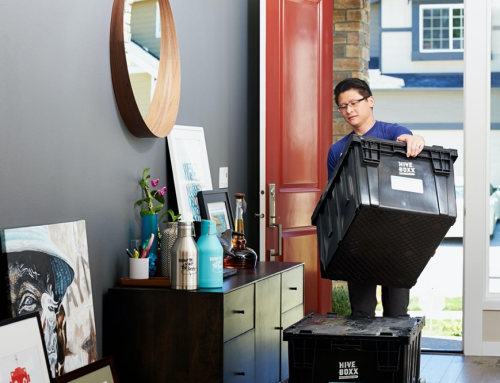
Relational paradox: When convinced a relationship won’t tolerate who you really are, you leave a part of you out of that relationship.
When I read the description of a relational paradox in Dr. Amy Banks’ book, Wired for Connection:The Surprising Link Between Brain Science and Strong, Healthy Relationships, a lightbulb went on in my head. The concept and real life experience were not new to me but the articulation of it was.
Leaving out the highly sensitive, expressive, emotional part
Over the years, I’ve put the relational paradox into practice in many, many relationships, both romantic and platonic. In most cases, I did it subconsciously. In most cases it was the highly sensitive, highly expressive, highly emotional part of myself that I excluded. It is that piece of me that I fear most people can’t handle or won’t like.
Long-term effects of not being authentic
The long-term effects of not being 100% authentic in those relationships were a sense of not truly belonging and not feeling understood. At any moment, my real personality might slip out, be negatively judged or worse, completely rejected. In some instances it was, which only reinforced my diligence to hide the unwanted parts. My guard could not go down. I had to be strong, tough and quiet about feelings.
From childhood, I have been in close relationships with both judgmental and non-judgmental people. The  judgmental people made it unwise to reveal my tender side. My vulnerability was used against me, creating an unsafe environment. The non-judgmental people gave me a sense of friendship and belonging but even with them I was hesitant to completely let my guard down. I still had a fear of being rejected because of past experiences with intolerant personalities. I mostly played the sweet, pleasing, never-sad, friend.
judgmental people made it unwise to reveal my tender side. My vulnerability was used against me, creating an unsafe environment. The non-judgmental people gave me a sense of friendship and belonging but even with them I was hesitant to completely let my guard down. I still had a fear of being rejected because of past experiences with intolerant personalities. I mostly played the sweet, pleasing, never-sad, friend.
Activating the DaCC
Dr. Banks states in her book that when we are on high alert for not belonging or feeling accepted our DaCC (dorsal anterior cingulate cortex) activates. This is a small strip in the brain deep in the frontal cortex. The DaCC is part of an alarm system in our bodies and is primarily known for picking up the distress of physical pain and the social pain of being left out.
If your DaCC is chronically or consistently activated it becomes highly sensitive to potential threats, thus making it more likely that you see danger (dislike, rejection, lack of acceptance) even when it may not exist.
Reading about the relational paradox concept in Dr. Banks’ book happened to coincide with a real life situation in which I was wrestling with the question of how much of myself to reveal to a new friend. In fact, I had written a note to myself a week prior that read, “Am I worried about him not being enough or me being too much?”
My note expressed my fear of my friend not being emotionally sensitive and deep enough (my fear of being too sensitive projected on him??) and my fear of being too sensitive, talkative, dependent, wrapped up in my kids, etc. I had experienced rejection and judgment for all the latter fears at one time or another. I had been ‘too much’ in the past.
I do not want to experience that cut off/rejected feeling again.
How to stop hiding parts of yourself
Dr. Banks recommends starting with taking note of when you hide or pull back in a relationship out of fear of ruining the connection and being rejected. Next she suggests keeping a mental or written library of positive relational moments (PRMs). PRMs involve memories of clear acceptance and connection. Thirdly, she suggests sharing some of your hidden self with people you consider highly safe.
 In Are Perfection-Seeking and Self-Reliance Holding You Back from Love, I wrote about letting go of the fear of being too sensitive. I vowed to curb my distancing behavior and move toward love. My hiding and pulling back are now in my conscious awareness.
In Are Perfection-Seeking and Self-Reliance Holding You Back from Love, I wrote about letting go of the fear of being too sensitive. I vowed to curb my distancing behavior and move toward love. My hiding and pulling back are now in my conscious awareness.
I have forever kept a diary or notebook of my high and low moments in life. In recent years, I’ve developed a practice of thinking about happy memories when I feel my stress levels rising. In recent months I’ve started putting positive moments in notes on my phone. If I start to feel anxious, I pick up my phone and read the PRMs listed there. The notes have been a great resource for keeping me in calm-land.
Lastly, I’ve done deep reflection over the last year or two about who are my safe relationships. I’m delighted to say I have several. When I start to feel my insecurities creep up I call one of these unconditionally kind caring people and spill my worries on them. I know it’s OK to get upset with them. I trust them. They trust me when they are in need of wholehearted listening as well. These relationships are such blessings.
How safe relationships feel
According to Wired to Connect, this is what you feel when safe relationships soothe the DaCC pathway:
Calm
You can count on that person in an emergency
It’s safe to acknowledge differences
A sense of belonging
Like an equal
Valued
Like there is give and take
I may always hesitate before showing strong emotions to someone. I may always wonder if they will accept, understand and even reciprocate my sensitivity. My nervous system is primed for negative judgment but with new insight and more discernment regarding positive relationships, I feel a greater sense of trust, calmness and confidence in being authentic.
Do you ever fear you are too much for people to handle? Do you hide parts of yourself to maintain relationships? Do you have safe relationships?
If you would like guidance soothing your social pain or fear of rejection, please contact me for personal or relationship coaching.







Brenda, this is one of the main reasons why I am single. Men don’t want to deal with my emotions and sensitivity. They are always telling me to be strong. This is why the last guy I was talking to, we’re not talking because of how I am. Everything was fine when I was back east but when I came to the west coast and things got overwhelming for me and I vented about it. He didn’t want to deal with it… and thats perfectly fine….some people just can’t handle how I am. Men are always telling me to be strong because they don’t want to deal with my emotions about anything no matter what it is.
They’re hard and shut down, so they want me to be the same way. Everything you said here is exactly how I feel and what I write about. And about finding someone you feel safe to vent to emotionally. Every time I feel a certain way about something, the guy that I’m talking to at the time, wants to act like a magician and dissappear but when they want to vent to me, they expect me to be there…It’s going to be a long time before I find love. My ex was always ghost when I felt a certain type of way about anything, and over time you just shut down and you are numb and you don’t feel safe to express yourself to anyone….I just got rid of him, that solves that problem, LOL.
I’m not going to stop being myself and being an HSP. It’s who I am and I can’t be anymore grateful that I found your website, which gives me and others literally the space to live and be free with our emotions, we need a safe community. I express myself way to much for any man to try and sensor me. When others try to make me feel bad about having a sensitive loving heart. I just move on from them. I don’t have room for any negativity and any one-sided relationships. I’m tired of giving and being there and listening, I want the same thing. I’m not asking for money, lol.. I ‘m asking for emotional security and support. And I can’t even get that. So I just stay by myself. Because if I can’t have that in a relationship. I don’t want anything at all. I’m not wrong for having feelings and I don’t need to be sensored, just because you don’t want to deal with how I feel.
Brenda, Such an amazing post! It’s enlightening and uplifting at the same time! You have toge gift to tap into issues that sensitive people experience, and untill you brought those issues to light! I’m one to say, I used to feel alone with those issues! I used to think I’m ‘differen’, due to my sensitive side that made interactions with others pretty hard at times. Now! your posts help me feel aware of who I am as a sensitive person, more inclined to accept myself, less lonely in a world that frowns upon sensitive people like me and so much stronger and happier with who I am.
I too experienced feeling it’s not safe to be myself around family etc when growing up! Those two dreadful words: ‘Highly sensitive’ showed up on my report cards in elementary school! Hard to forget them. I too have learnt from an early age, that strong emotions are unwelcome, and that I had to act ‘tougher’.
Thankfully, my sensitive side, as I grew older, and especially in the past 10 years or so, has contributed to being the following:
– great loyal friend
– supportive boss towards my employees
– better listener when random strangers want to share stories about their lives.
– being beautifuly in tune with animals and nature
– appreciating music to a point where I feel it and enjoy it at a much higher level than others around me. It’s FANTASTIC
And many other wonderful things, that I feel,if it wasn’t to my awesome sensitive side, they wouldn’t be there.
Thank you for all you share Brenda! And thank you for letting us share with you and with those who experience similar thoughts.
Just need to apologize for all the errors in my previous post! Typing on a smart phone at work, has its downfall!
One of my biggest desires when I write is to make people feel less alone and more understood. I’m so thrilled you feel that. Thank you so much for your very, very kind words. I’m so glad you feel heard and understood here. I definitely feel you! 🙂 Totally agree about the music thing. Huge bonus about being highly sensitive!